Sarreguemines
Antique Asparagus Gravy Boat - Sarreguemines - 1870s
Antique Asparagus Gravy Boat - Sarreguemines - 1870s
Couldn't load pickup availability
Presenting an exquisite Sarreguemines majolica asparagus gravy boat from the 1870s—a quintessential embodiment of French culinary artistry!
This piece showcases the renowned trompe l'oeil technique, artfully mimicking the appearance of bundled asparagus spears, a testament to the period's fascination with naturalistic design. The vibrant glazes and meticulous craftsmanship highlight Sarreguemines' dedication to quality and aesthetic excellence. Despite a small chip on the accompanying plate, the gravy boat remains in good condition, preserving its historical and decorative value.
Such asparagus-themed majolica pieces are highly sought after by collectors, reflecting the 19th-century European appreciation for both functionality and ornate tableware. This gravy boat not only serves as a functional item, but also as a charming conversation piece, capturing the essence of French elegance and the rich tradition of majolica pottery.
- Material: Majolica
- Style: French Country Style / Art Nouveau
- Place of Origin: France
- Mark: Sarreguemines
- Date of Manufacture: Around 1900
- Condition: Good condition apart from one small chip on the plate, see close-up
Dimensions:
Saucière:
Length: 21 cm | 8.2 in
Depth: 9 cm | 3.5 in
Height: 12 cm | 4.7 in
Saucière with plate:
Length: 28 cm | 11 in
Depth: 15 cm | 5.9 in
Height: 13 cm | 5.1 in
Share
- Worldwide Shipping
- Secure Packaging
- Loving Curation
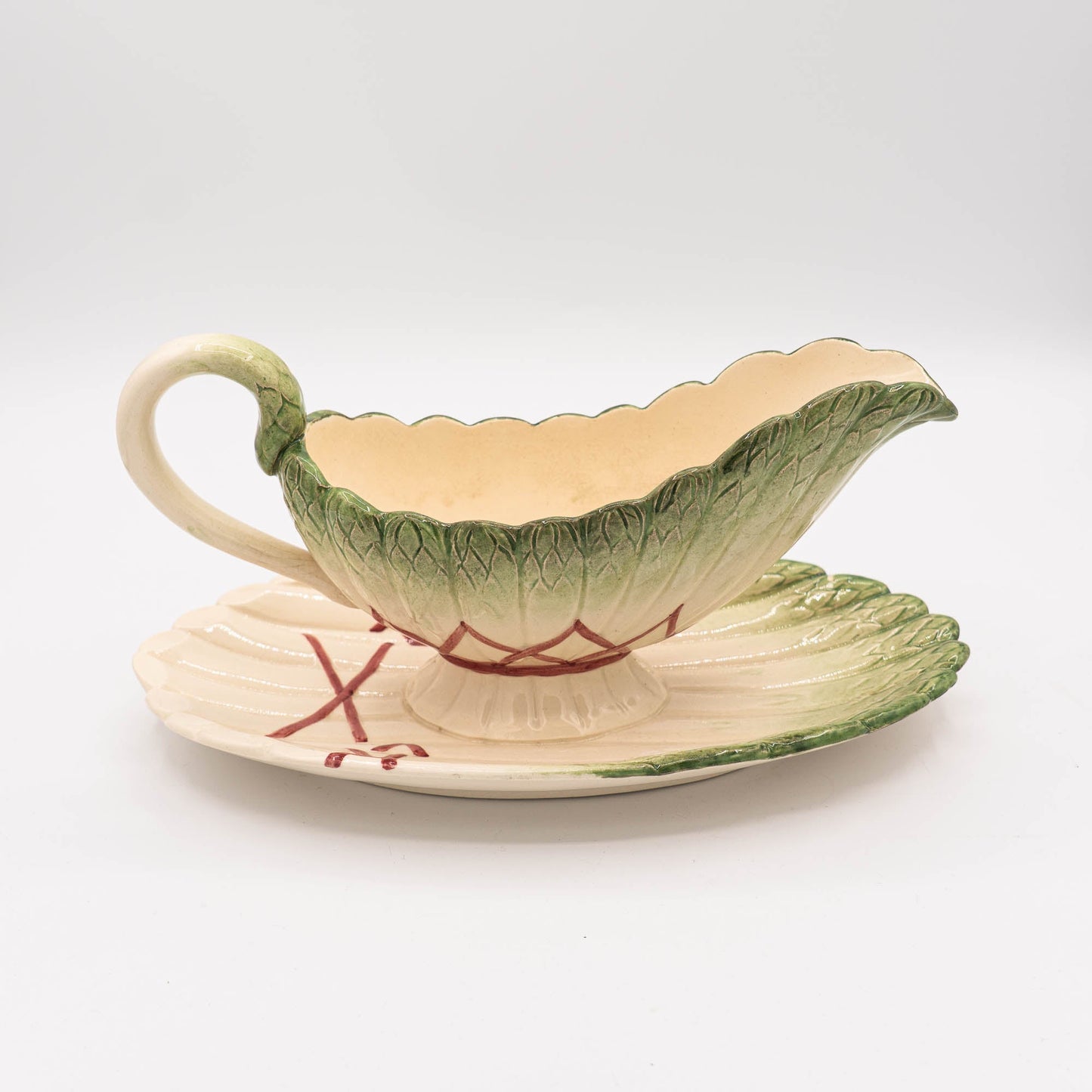

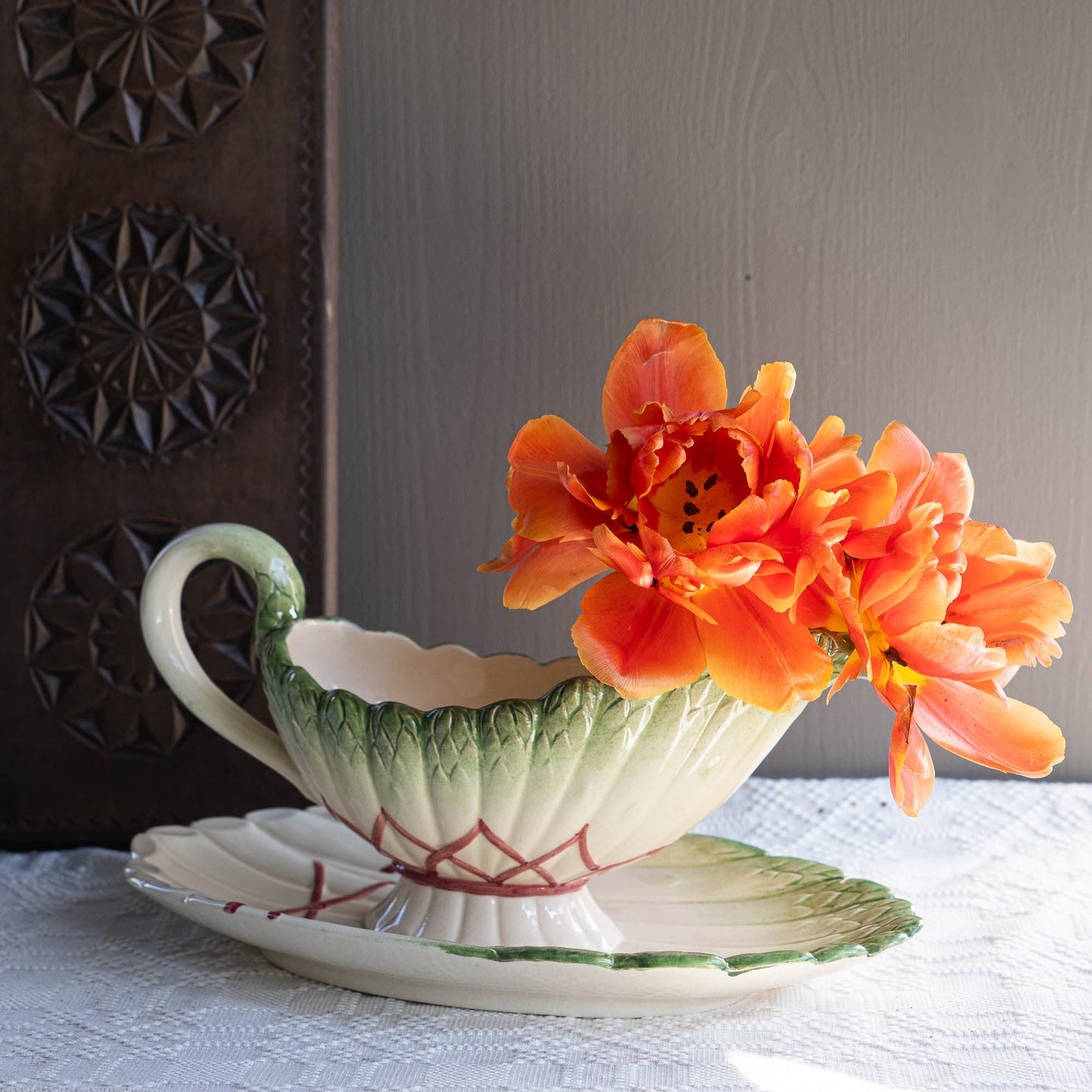
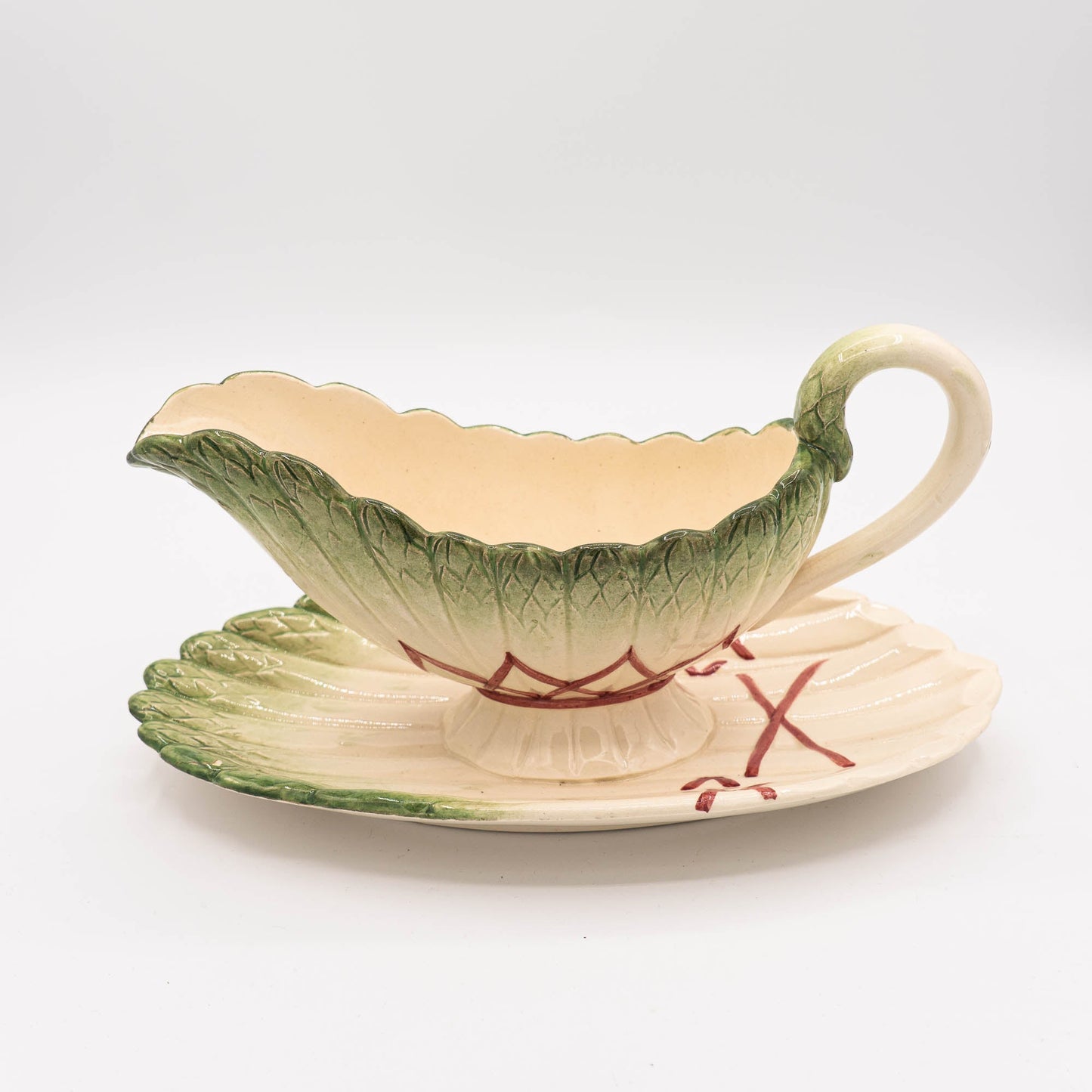
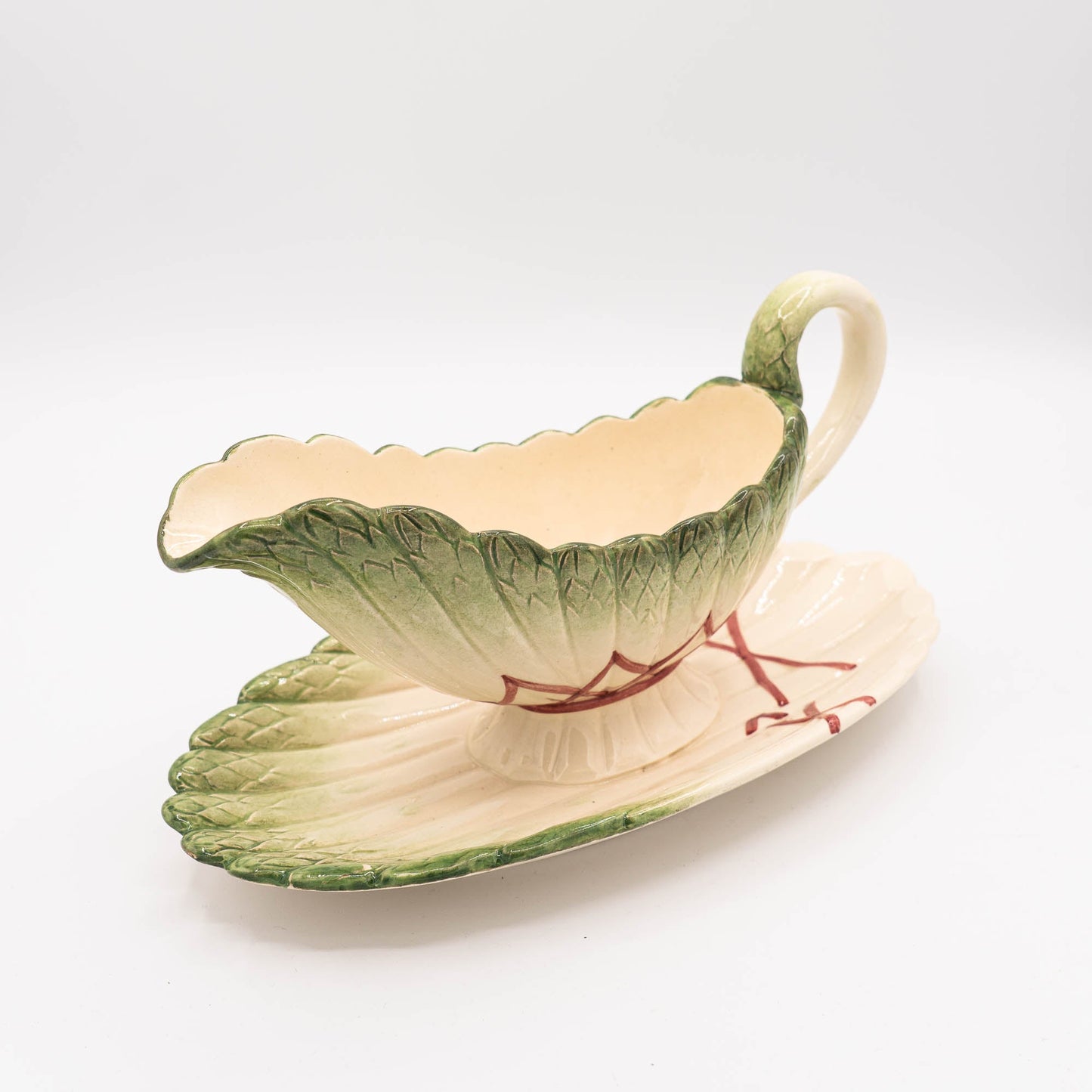
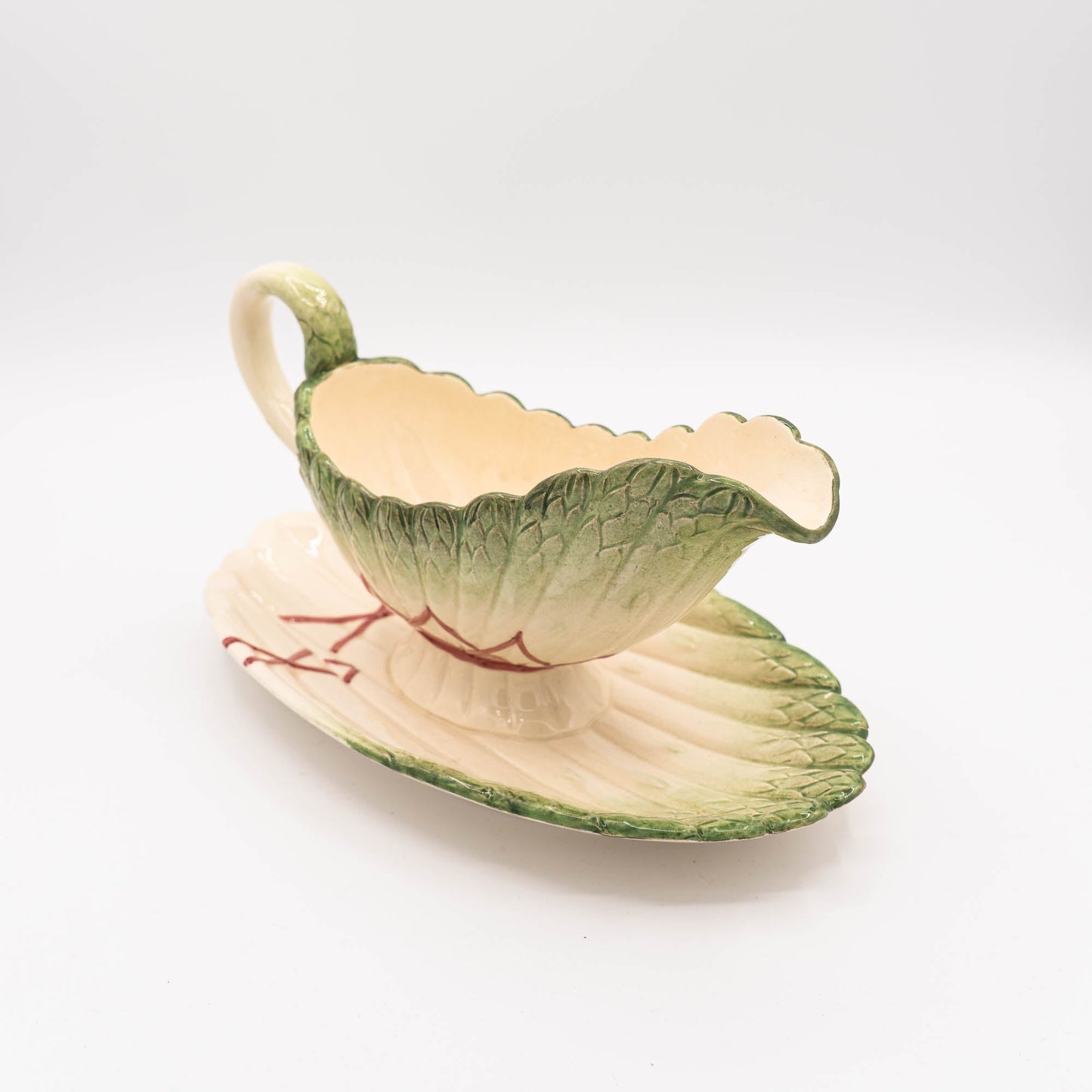
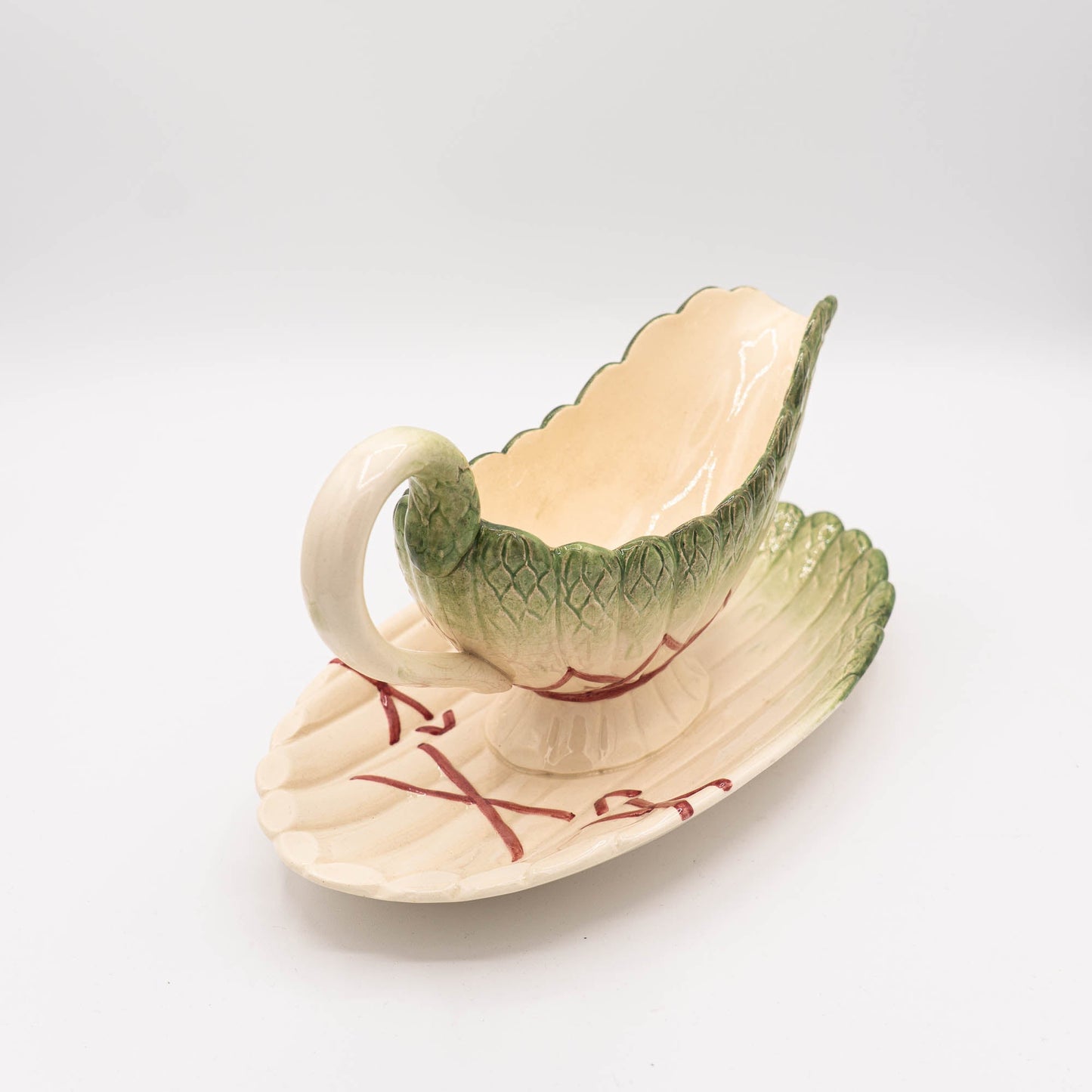
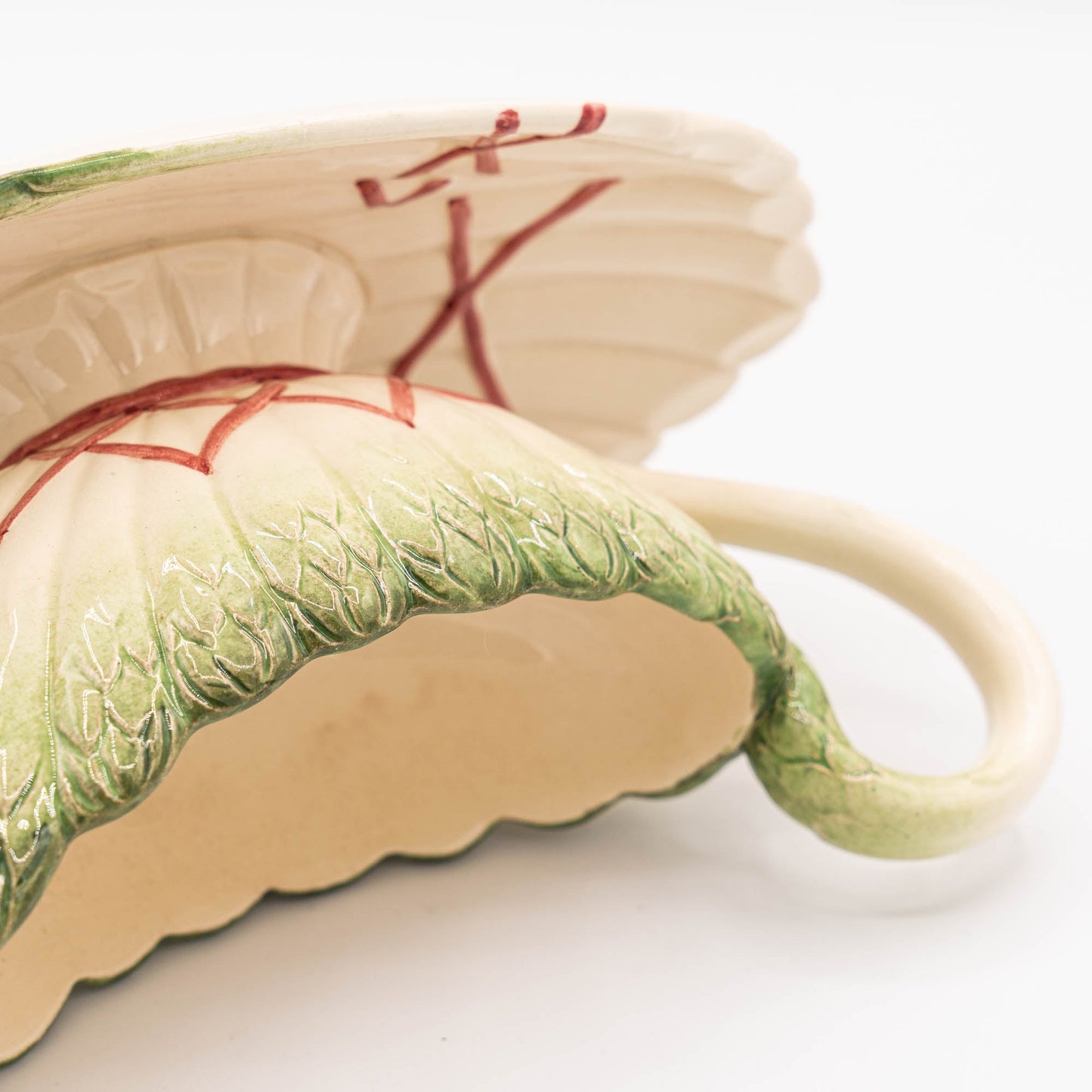
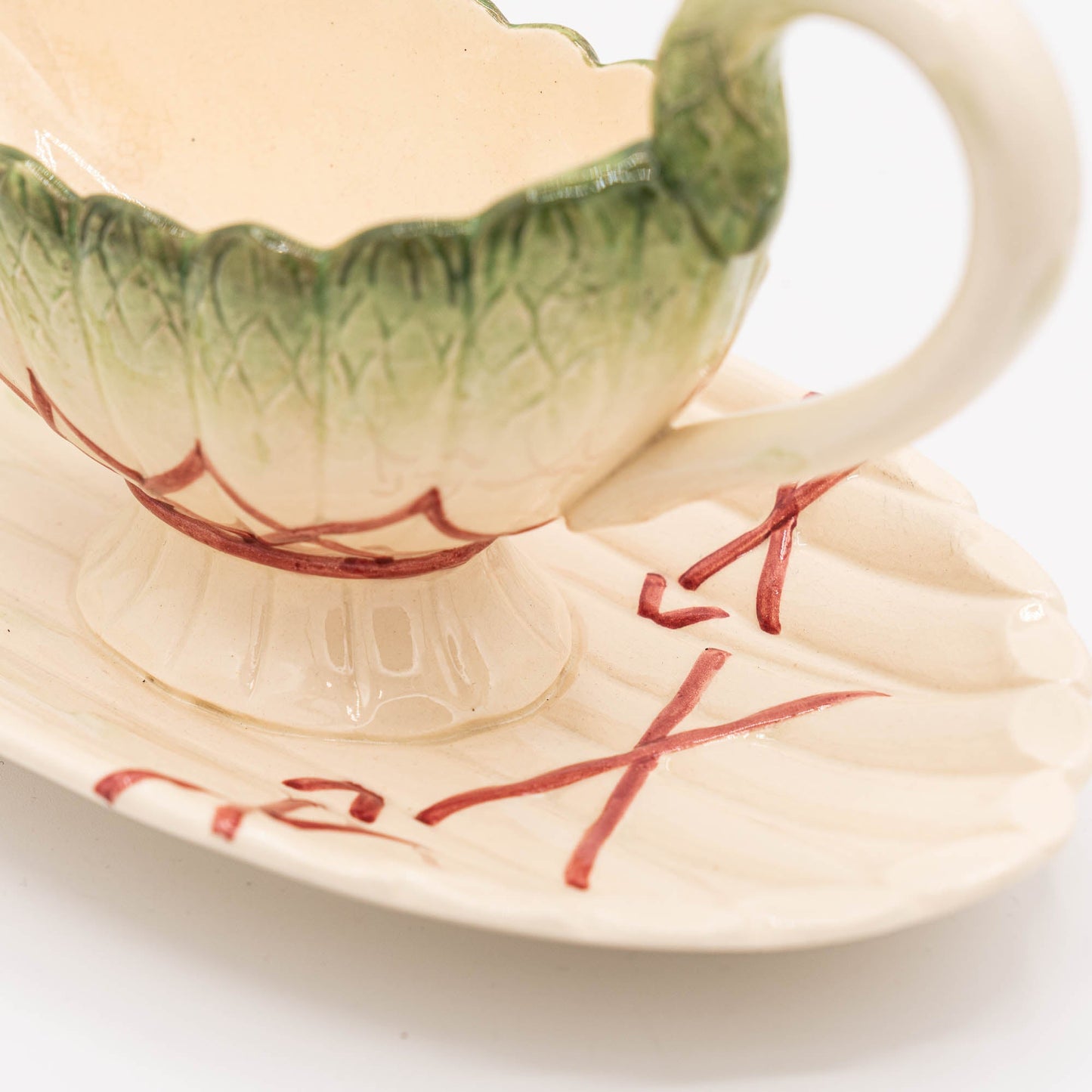
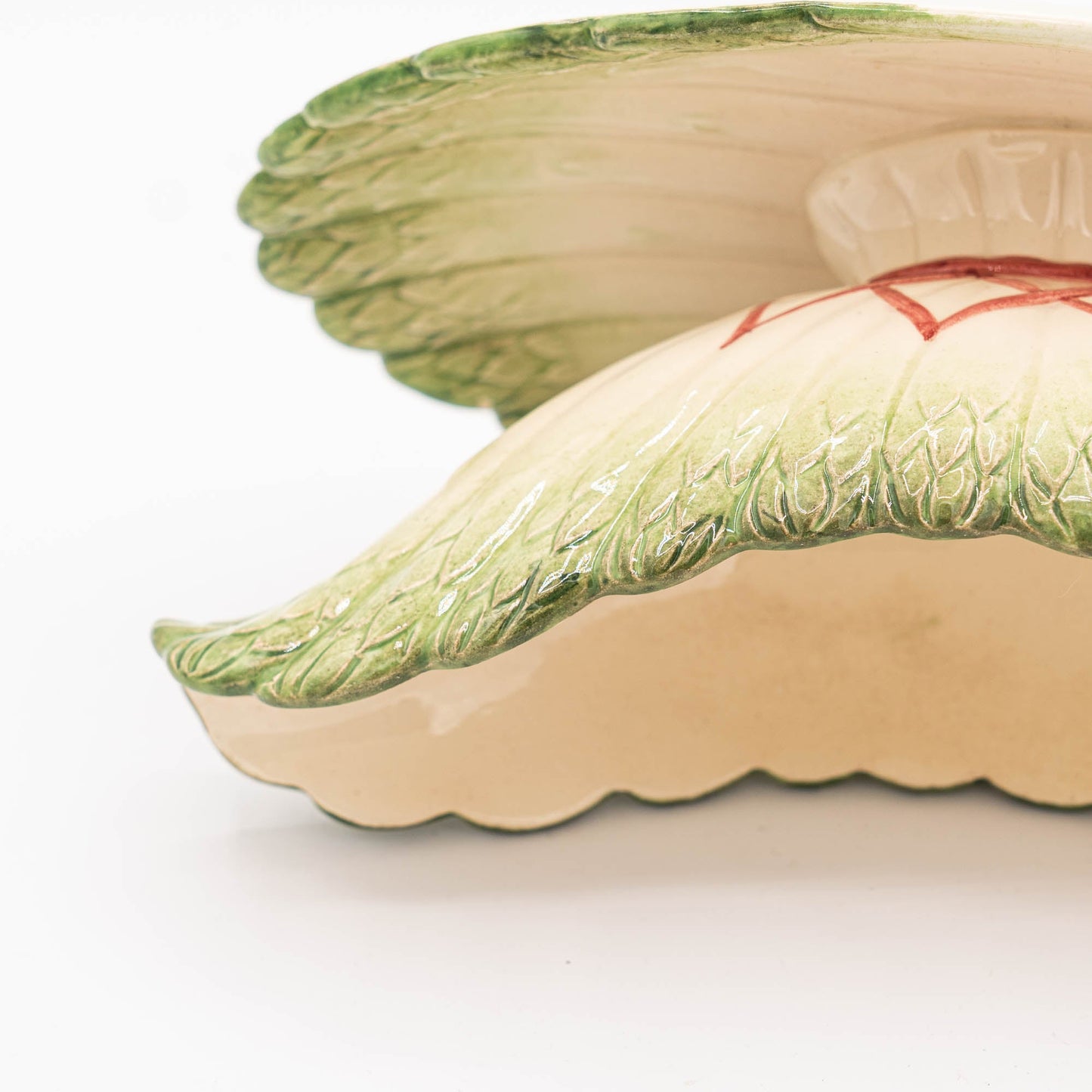
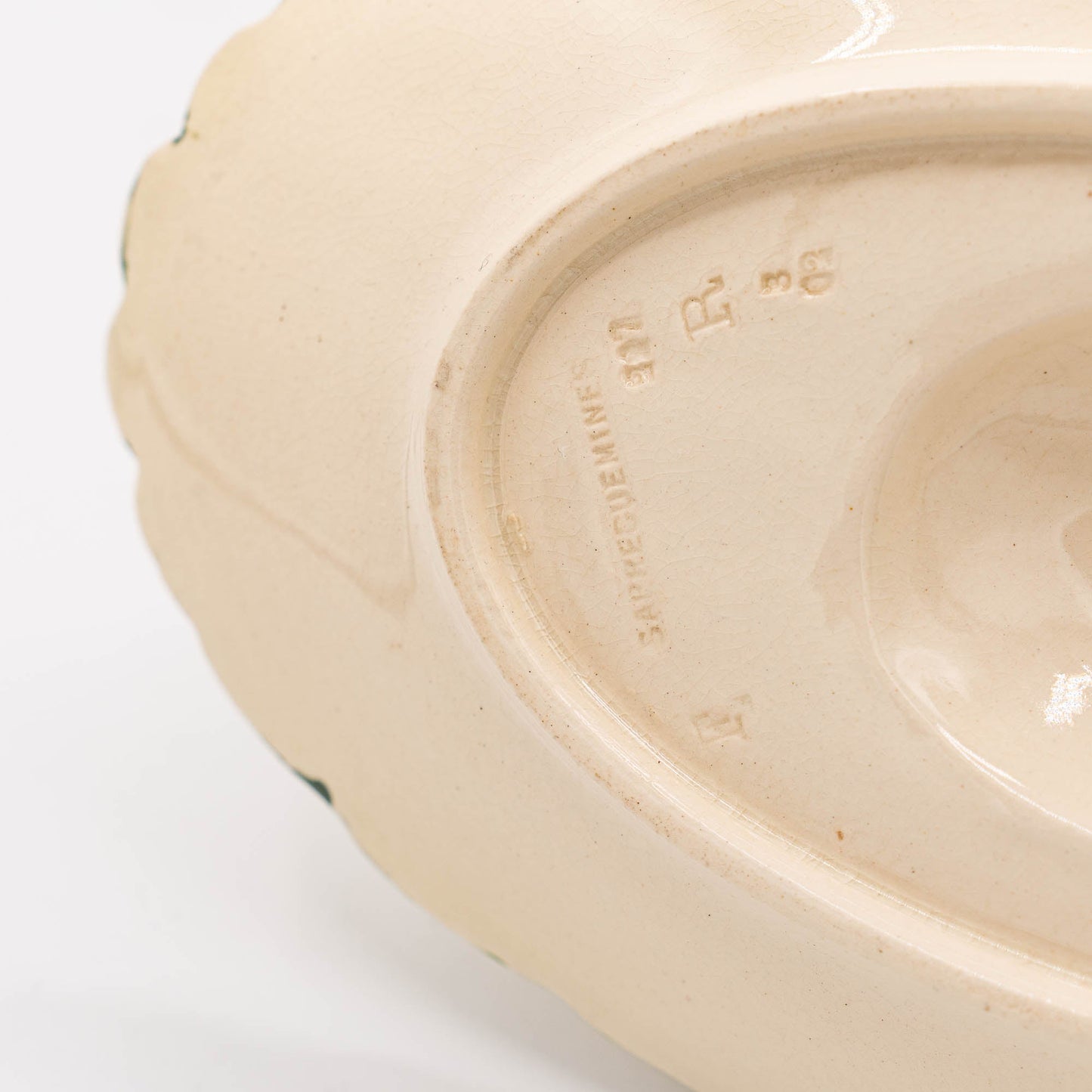

Origin & Maker
Sarreguemines is a renowned French faience company that has been producing beautiful ceramics since the late 18th century. Founded in 1790 in the town of Sarreguemines, near the French-German border, the company quickly gained a reputation for creating high-quality earthenware and faience pieces. By the 19th century, Sarreguemines had become one of France’s leading ceramics manufacturers, producing finely decorated tableware, tiles, and decorative items.
Sarreguemines gained international recognition when they showcased their work at the Exposition Universelle in Paris in 1867, a world fair that celebrated industrial and artistic achievements. This exposure helped solidify the company's reputation for innovation and craftsmanship, with their decorative faience pieces becoming highly sought after across Europe.
The company is best known for its intricate Majolica designs, vibrant glazes, and detailed hand-painting. Sarreguemines continued to flourish through the 19th and early 20th centuries, producing everything from rustic faience to elegant Art Nouveau ceramics. Today, pieces from Sarreguemines are cherished by collectors for their rich history and exquisite craftsmanship, embodying the artistry of French faience.
Blog posts
View all-

A Serendipitous Morning at the Rue de Bretagne ...
There are few joys in life that match the thrill of stumbling upon a hidden treasure, and for me, flea markets hold that magical allure. One of my favourite flea...
A Serendipitous Morning at the Rue de Bretagne ...
There are few joys in life that match the thrill of stumbling upon a hidden treasure, and for me, flea markets hold that magical allure. One of my favourite flea...
-

Emile Bourgeois and "Le Grand Dépôt" in Paris
Recently, I found this stunning Sarreguemines wash set. It was at the Brocante in Belfort, France. On this day, we had got up at 4 AM to be there in...
Emile Bourgeois and "Le Grand Dépôt" in Paris
Recently, I found this stunning Sarreguemines wash set. It was at the Brocante in Belfort, France. On this day, we had got up at 4 AM to be there in...
-

The Legacy of Robert Haviland: A Journey from N...
The story of Robert Haviland porcelain is one of artistry, transatlantic ambition, and enduring heritage. It begins in the mid-19th century when David Haviland, an enterprising New Yorker, founded Haviland...
The Legacy of Robert Haviland: A Journey from N...
The story of Robert Haviland porcelain is one of artistry, transatlantic ambition, and enduring heritage. It begins in the mid-19th century when David Haviland, an enterprising New Yorker, founded Haviland...















